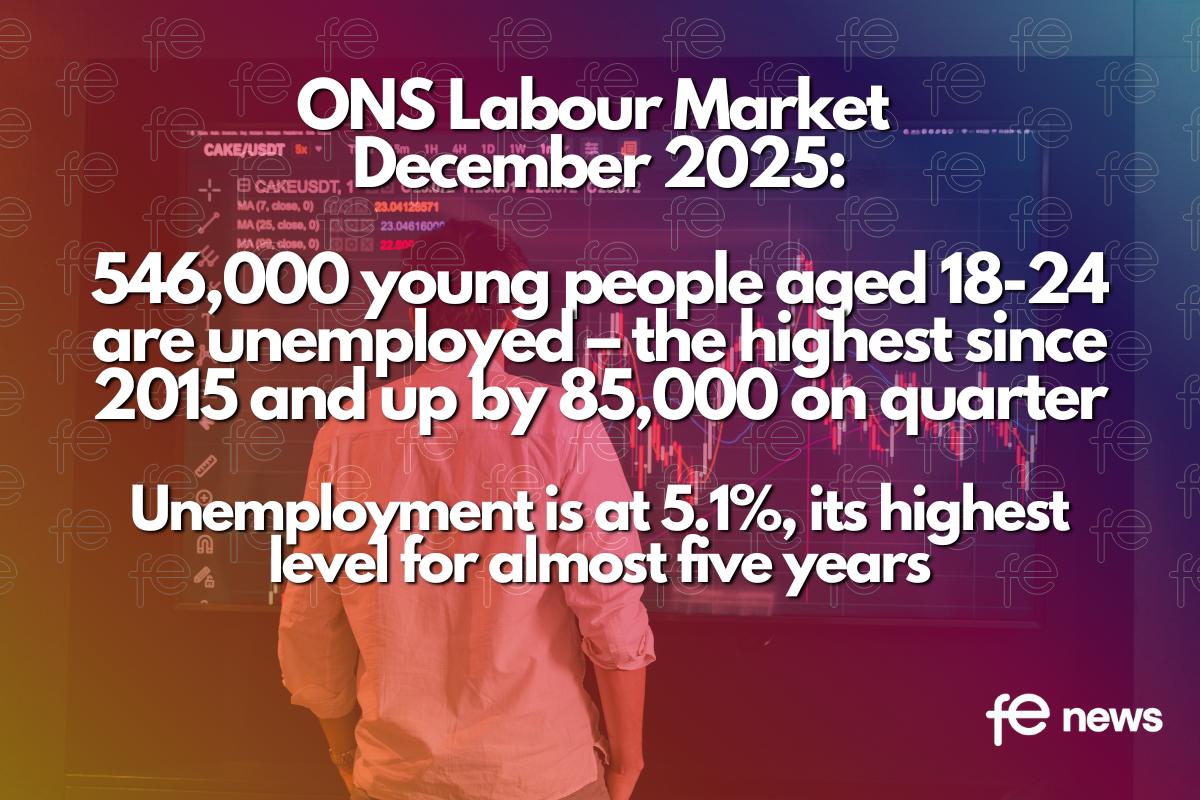Vacancies bounce back, but delayed lockdown easing may stall progress

@ONS Labour Market Statistics: Jobs market recovering, but more than half a million long-term unemployed for first time in five years
The latest figures suggest that the jobs market is showing signs of recovery.
The number of payrolled employees has increased for the sixth consecutive month, up by 197,000 in May 2021 to 28.5 million. It is however 553,000 below levels seen before the coronavirus (COVID-19) pandemic. Since February 2020, the largest falls in payrolled employment have been in the accommodation and food services sector, people aged under 25 years, and people living in London.
These three groups have also seen the largest monthly increases but are still well below pre-pandemic levels.
Following a period of employment growth and low unemployment since the start of the pandemic, employment had generally been decreasing and unemployment increasing. However, the latest estimates (February to April 2021) continue to show signs of recovery. There was a quarterly increase in the employment rate of 0.2 percentage points to 75.2% and a quarterly decrease in the unemployment rate of 0.3 percentage points to 4.7%. The economic inactivity rate was largely unchanged on the previous quarter at 21.0%.
With the relaxation of many coronavirus restrictions, total hours worked increased on the quarter, however it is still below pre-pandemic levels. The redundancy rate decreased on the quarter and is now similar to pre-pandemic levels.
The number of job vacancies in March to May 2021 was 758,000, only 27,000 below the level before the coronavirus (COVID-19) pandemic in January to March 2020; most industries have recovered to show vacancies above pre-pandemic levels. The strongest quarterly increase was in accommodation and food services. In May 2021, the experimental monthly vacancies data, and the experimental Adzuna online vacancies data both surpassed pre-pandemic levels.
Annual growth in average employee pay has continued to increase, however this is driven by compositional effects of a fall in the number and proportion of lower-paid employee jobs and because the latest month is now compared with April 2020 when earnings were first affected by the coronavirus (COVID-19) pandemic (the base effect). Growth in average total pay (including bonuses) and regular pay (excluding bonuses) among employees was 5.6% for the three months February to April 2021.
Sector Reaction
 Chancellor of the Exchequer Rishi Sunak said:
Chancellor of the Exchequer Rishi Sunak said:
“Our Plan for Jobs is working – the latest forecasts for unemployment are around half of what was previously feared and the number of employees on payroll is at its highest level since April last year.
“We understand the value of work and the distress caused by unemployment – that is why we are continuing to support people and jobs.
“The furlough scheme is running all the way through until September and we are creating new routes into work through apprenticeships, Kickstart placements for young people as well as targeted support for the long term unemployed.”
David Morel, CEO, Tiger Recruitment, said:
“For the second month in a row, ONS’ labour market statistics show a recovering jobs market.
“Businesses are hiring again across all sectors with the result that, in most industries, vacancies have surpassed pre-pandemic levels. This mirrors what we’re seeing at Tiger Recruitment; vacancies are at an all-time high and we have more active jobs advertised than at any other time in our 20-year history.
“However, it isn’t all plain sailing ahead. Concerns over the Delta variant and the Government’s decision to delay lockdown easing may mean that some businesses put their hiring plans on hold, particularly in the hospitality sector. However, the hope is that this is a temporary blip rather than a derailment.”
 With more than twice as many vacancies as jobseekers “we need to do much better” at helping the unemployed fill jobs says Tony Wilson, Director, The Institute for Employment Studies (IES):
With more than twice as many vacancies as jobseekers “we need to do much better” at helping the unemployed fill jobs says Tony Wilson, Director, The Institute for Employment Studies (IES):
“Today’s figures confirm that the jobs market is making a strong recovery. Payrolled employment added nearly 200 thousand in the month of May alone, its fastest rise on record, while May saw nearly 900 thousand vacancies in the economy, one of its highest figures ever.
“However despite this, and continued recruitment problems in a number of industries, there are still more than twice as many unemployed people still chasing every vacancy and long-term unemployment has reached a five year high of over half a million. So we need to do much better at helping those people who want jobs to find and take up the jobs that want people.”
Steve Haines, Director of Public Affairs at youth charity Impetus is urging the Government to address youth unemployment:
“This is a critical moment for youth employment. While today’s labour market statistics show positive signs for the economy, we mustn’t fall asleep at the watch and allow an uneven recovery.
“A deeper problem is being masked – hundreds of thousands of young people who are still on furlough face yet more time out of the labour market, many more will be leaving education and looking for work and those young people furthest from the labour market risk getting stuck out of education and employment in the long term.
“As we approach the one year anniversary of the Prime Minister promising an ‘Opportunity Guarantee’ for young people, we need to see targeted support to address those young people worst affected by the crisis.”
 Stephen Evans, chief executive of Learning and Work Institute said:
Stephen Evans, chief executive of Learning and Work Institute said:
“These positive data show the labour market recovering as the economy reopens. Vacancies are back to pre-pandemic levels and payroll employment rose by 200,000. However, the crisis is by no means over. The extension of restrictions is likely to slow recovery, with millions still on furlough. Repairing the damage is likely to take years with long-term unemployment already up 50% compared to last year.
“To fix the mismatch between some employers finding it difficult to recruit despite increased unemployment, we need high quality jobsearch support and better retraining help for those affected by coronavirus-related changes our economy. The furlough scheme limited the worst of the damage; employment support needs to make the most of the recovery.”
Rebecca McDonald, Senior Economist at the Joseph Rowntree Foundation, said:
“Many workers who are living in poverty will be relieved to see the sectors they work in showing signs of a strong recovery in recent months. After suffering one of the biggest falls in employment last year, the hospitality sector is now recruiting for new workers faster than any other industry. In the months ahead, this should lead to the creation of new opportunities for those who experienced turmoil in the last year.
“Today’s figures show a growing number of people have been unemployed since the first lockdown or before the pandemic even hit. This long period of unemployment has the potential to be really damaging to their long-term job prospects. We need to ensure these 400,000 workers are not left behind in the recovery but are supported back into jobs which provide the pay, flexibility, and security they need to live a decent quality of life.”
 James Reed, Chairman of REED, the UK’s largest recruitment firm:
James Reed, Chairman of REED, the UK’s largest recruitment firm:
“The latest ONS employment figures do not begin to describe the ‘jobs boom’ that is now underway in the UK. This dramatic change has happened very quickly and will not be apparent from historic data. The talk now will be all about labour shortages, skills shortages and wage increases.
“The key questions are, how fast will the economy grow? And to what extent will progress be limited by labour market constraints?
“Last month was reed.co.uk’s best month for job postings since February 2008 – before the last financial crash. Over 275,000 jobs went onto reed.co.uk in May, a 26% month-on-month increase and a 237% year-on-year increase.
“Every region saw significant month-on-month increases in jobs posted, rising particularly quickly in London. Vacancies were up 319% year-on-year, the second largest year-on-year growth percentage, suggesting the capital – which was hit particularly badly by the pandemic – is recovering well as restrictions ease.
“And the vacancies were also well distributed across various sectors. Jobs in the transport and logistics sector rose by 261% month-on-month, with retail (55%) banking (40%) and customer service (37%) and hospitality and catering (37%) also rising. Many of these are among the sectors which suffered the most during the pandemic and some are increasing their average salaries, such as hospitality and catering where salaries rose by 18%. This recovery is encouraging.
“However, the recovery could be curtailed if staff shortages are not addressed urgently. While the furlough scheme undoubtedly offered an important safety net for many workers and employers during the most challenging months of the pandemic, it could now be impeding our economic recovery.
“The huge number of workers still on furlough – up to three million by the end of April – is at odds with a labour market which is now growing rapidly and facing a candidate deficit in certain sectors. As a result, we could see wage inflation, making it an ideal time for furloughed workers to depart zombie jobs and seek new opportunities elsewhere.”
Lee Biggins, CEO and Founder of the UK’s leading independent job board said:
“Over the last few months our job market data has consistently shown that businesses have been leading the pandemic recovery with boldness and optimism. Whilst a delay in the lifting of restrictions may be necessary, it’s imperative that the Government and the general public continue to support the UK job market. The impact of an additional 4 weeks under restrictions cannot be underestimated. After 15 months of closures and limitations, this will push some businesses to breaking point.”
 Businesses are turning to low-code technology to help bridge the digital skills divide. Earlier this week, Gartner reported that 80% of technology products and services will be built by those who are not technology professionals. Nick Ford, Chief Tech Evangelist at Mendix, said:
Businesses are turning to low-code technology to help bridge the digital skills divide. Earlier this week, Gartner reported that 80% of technology products and services will be built by those who are not technology professionals. Nick Ford, Chief Tech Evangelist at Mendix, said:
“The pandemic has put increased pressure on IT departments that were already stretched, as the result of a more mature digital business model is a never-ending IT backlog. Citizen development is the best way to fix this problem, as it enables IT to partner with the business to build solutions the organisation needs – faster and with less rework.
“There is also a clear appetite for those outside of IT to play a role in building tech products and services, with recent Mendix research finding that 60% of UK workers want to put their digital skills to use by supporting their organisation’s digitalisation projects. To harness this appetite, businesses should invest in low-code technology which provides a single, collaborative platform that enables anyone, regardless of developer background or expertise, to get involved in building business applications. This serves to speed up the entire app development process, spurring innovation while also helping employees build their digital skills by learning from one another.”
Young people have borne the brunt of job losses throughout the pandemic, and the graduating class of 2021 is braced to enter the worst job market in decades.
HR tech platform iCIMS recently released its Class of 2021 report, which reveals:
- Grads are facing backup-plan decision paralysis: 22% are considering a post-grad degree to put off the job search, with others split evenly between taking time out, moving back in with parents, and entering the gig economy instead of a full time job
- Salary expectations are surprisingly high: UK grads expect £26,932, while employers are offering an average of just over £24,000
- A side hustle is almost inevitable: 72% of grads also say they’re likely to get a gig economy job to supplement their main income.
UK labour market: June 2021
Estimates of employment, unemployment, inactivity, average weekly earnings, vacancies and other labour market related statistics for the UK. This release also includes latest estimates of workforce jobs.
Labour market in the regions of the UK: June 2021
Regional, local authority and Parliamentary constituency breakdowns of changes in UK employment, unemployment, economic inactivity and other related statistics.
Labour market statistics time series: June 2021
Large dataset which contains labour market statistics data time series.
10th Jun 2021: Graduate, postgraduate and non-graduate employment rates and earnings for England.
Graduate labour market statistics: 2020
Details
These statistics show labour market conditions for the following groups living in England:
- graduates
- postgraduates
- non-graduates
This release also sets out a breakdown of graduate outcomes by different subcategories, such as gender.











Responses